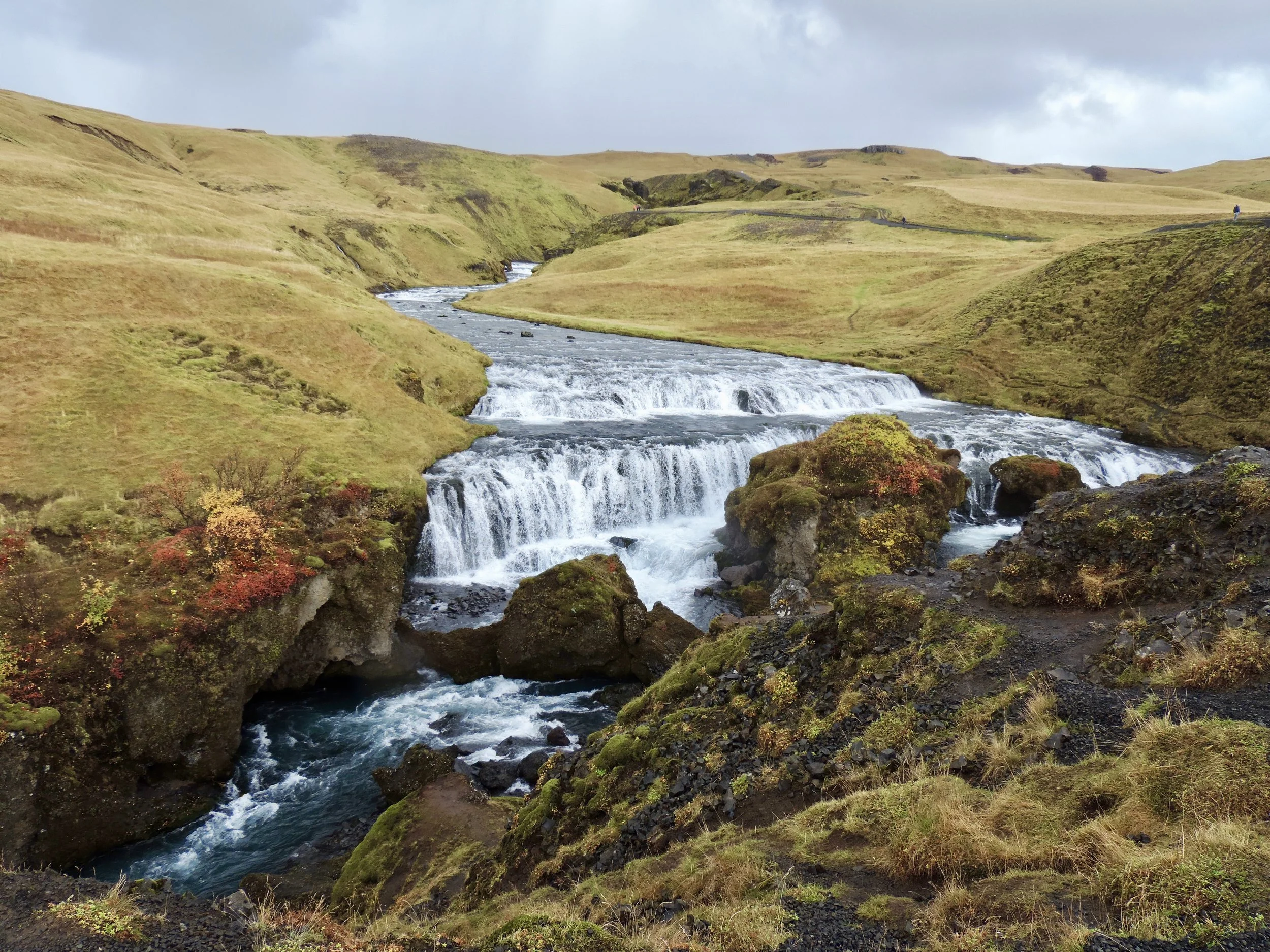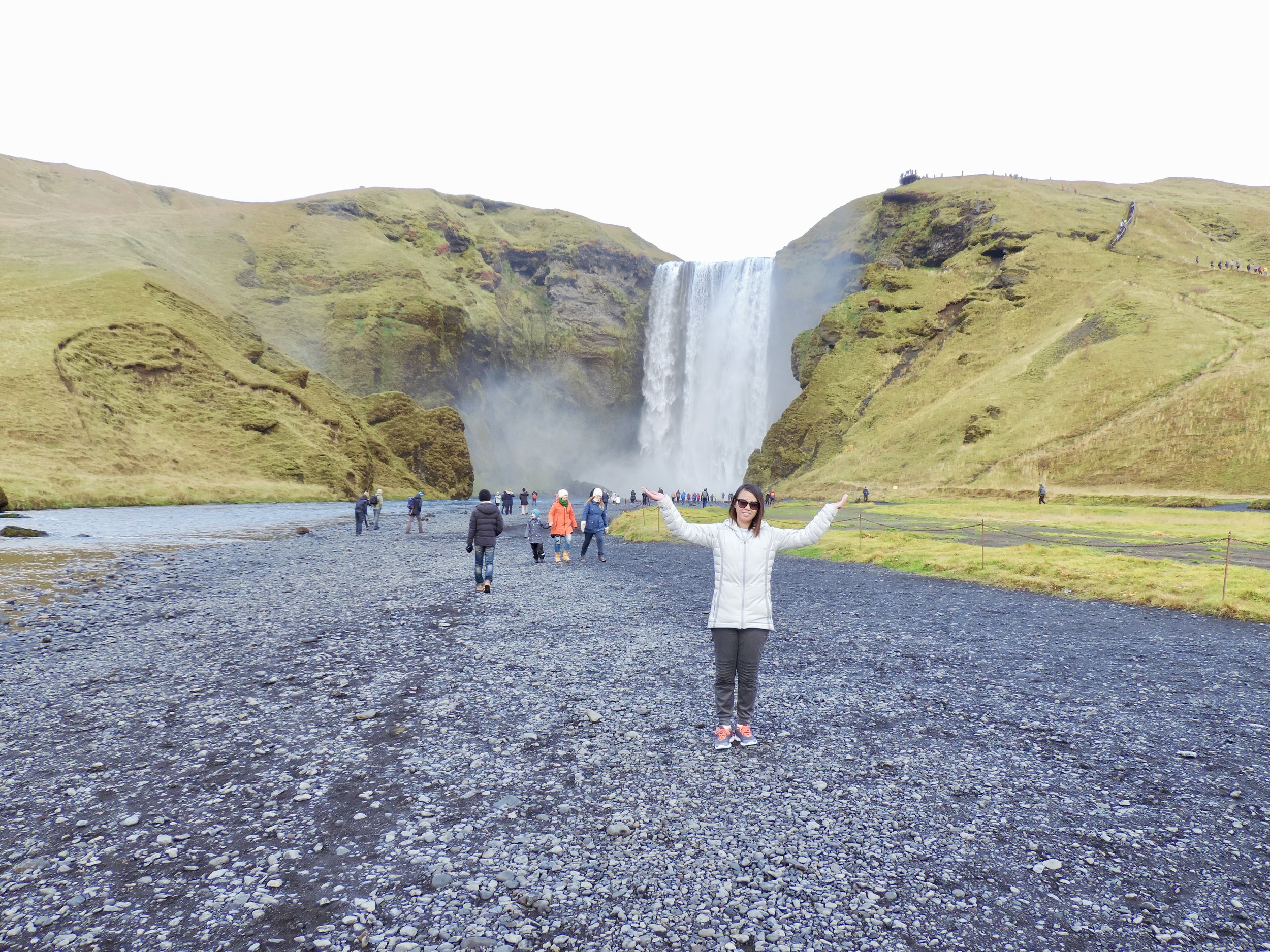Day 2 was absolutely jam-packed in the best possible way. We managed to visit all of the following attractions and all of them were mindblowing. More details are stated below for you to decide if the attraction is worth visiting.
Kerið (highlight)
Seljalandsfoss
Skógafoss (highlight)
Sólheimasandur Plane Crash
Vík (highlight)
STOP #1 Kerið - "the crater is like a window on the groundwater"
Writing Credits: www.kerid.is
Tips:
Explore and take photos along the different vantage points
Keep to marked footpaths
Descend to the base of the crater for a more intimate look at the green turquoise waters of the crater
Fun Fact: Björk once performed a concert suspended in the middle of the crater!
Our first stop of the day was a 6500 year old explosion crater with vivid red and sienna earth. It lies at the northern end of a row of craters, and is oval-shaped, about 270m long, 170m wide and 55m deep. At the very bottom, the depth of the water varies between 7m and 14m. You can observe the water more closely if you descend the stairs to the bottom of the crater.
According to an old tradition, an increase in the water level here is accompanied by a corresponding decrease in the pond on Búrfell in Grímsnes. Kerið is located in Iceland's Western Volcanic Zone, which runs through the Reykjanes peninsula and the glacier Langjökull. Traces of volcanism are not conspicuous, as most of the eruption sites are low-lying and many craters are shrouded by vegetation, but Kerið is a popular tourist attraction with striking features.
STOP #2: Seljalandsfoss - Lose track of time as you are engulfed by the magic of the falls
Tips:
Bring a raincoat as you will get soaking wet from the drizzle.
It is awesome walking behind Seljalandsfoss (almost a tourist rite of passage!) especially on a sunny day when one can catch a rainbow.
From the Ring Road, you'll see the marvellous 65m high falls, which descend over a rocky scarp into a deep, green pool. A slippery path circles to the back of the waterfall. In rainy weather, a rainbow would filter rays against it, creating a beautiful prism effect. Stand behind the cascade as it plunges powerfully into the pool below.
You will find another waterfall called Gljúfrabúi (translation: Dweller of the Gorge) which is 40m high and covered by a huge rock (This was the best photo I was able to take, unfortunately). It is best to wear rainboots and perhaps a raincoat if there is a lot of drizzle. It was truly a mystical experience being so close by the waterfall.
You can either wade through the gorge which is easy, or climb up the rock which is in front of the waterfall. I have never climbed up the rock, but if you do so you can look down at Gljúfrabúi.
STOP #3: Skógafoss - Your love pours down on me, falls like a waterfall
From Moon Travel Guide: Due to the amount of spray the waterfall produces, as well as the tempestuousness & unpredictability of Iceland's weather, it's common to see rainbows over the falls.
This was by far one of my top waterfalls (even though admittedly, I was spoilt for choice) due to the lush meadows as well as various stunning vantage points/photo opps surrounding the vicinity which truly made me feel like I was *lost in the wild*. I mean, look at those stunning lush colors!
There was a walking path beside the waterfall to scale the mountain. Ascend the steep staircase alongside for dizzying views. Alternatively, meander to the foot of the falls, shrouded in layers of mist and rainbows.
A 62m high waterfall descends over the western edge of Skógar in dramatic fashion. According to Viking lore, a settler named Prasi hid a chest of gold behind the waterfall.
Fun Fact: We met a man who had lost his iPhone in the upper section meadows of Skógafoss. While my mom and I were initially skeptical, my dad very kindly offered to locate it using his "Find the iPhone" app. Just proves again how amazing technology is, even in the (literal) wild. Keep this story in mind as future posts appear as the story indeed comes full circle.
STOP #4: Sólheimasandur Plane Crash - Iconic enough for Instagram, is it worth the walk?
Driving directions: After driving past Skógafoss going East on Route 1, you will cross a bridge with yellow blinking delights and a dirt access road to Sólheimajökull Glacier on the left. The road sign marks the glacier access road, from this point, keep driving east for approximately 2km and watch for another dirt road and turnoff with the gate on your right.
The story behind this attraction is quite fascinating:
On Saturday Nov 24, 1973, a United States Navy Douglas Super DC-3 airplane was forced to land on Sólheimasandur’s black sand beach in the south of Iceland after experiencing some severe icing. Luckily, all crew members survived the crash, but the airplane’s fuselage was abandoned. Now it’s become a photography dream location (yes, I'm looking at all you IG-ers!)
Crunch your way down the 4km long gravel path for 50 minutes (not kidding, it was a realllllly long walk and felt like FOREVER) When you finally glimpse the wreck, you will silently REJOICE. The wreckage is hidden behind the sand dune on the right side near the ocean edge.
Although I personally think you could give this a miss as it is man-made (Iceland has more enjoyable natural wonders) and the walk back and forth is extremely time-consuming, it was definitely iconic & haunting. The wreckage is amazing and eerie, and yes, it's a really popular tourist attraction.
Photo Credits: www.livelifewithaview.com
STOP #5: Reynisfjara Beach, Vík - Black sand and basalt columns
Ah, the famous Reynisfjara Beach in the small village in the picturesque landscape near the valley Mýrdalur.
This stunning and unique black sand beach is a popular tourist attraction. It has a really nice pyramid shaped cliff of basalt columns called Gardar and a shallow cave with basalt columns that looks interesting. I was definitely in the awe of the amazing natural basalt column towers which were like natural leggo. In the sea towards the nearby (and really nice village of Vík) lie the dramatic looking sea stacks called Reynisdrangar. The iconic cluster of sea stacks rise from the sea like ebony towers at the western end of the black sand beach. Tradition states that these are ship masts that trolls were stealing when they got caught in the sun ;)
The cave with the basalt columns is really cool and people do try to get as close as possible to the Reynisdrangar sea stacks but PLEASE BE CAREFUL of not being caught out when the high tide comes in.
That's a wrap for an insanely productive Day 2. Stay tuned for Day 3! :)



















